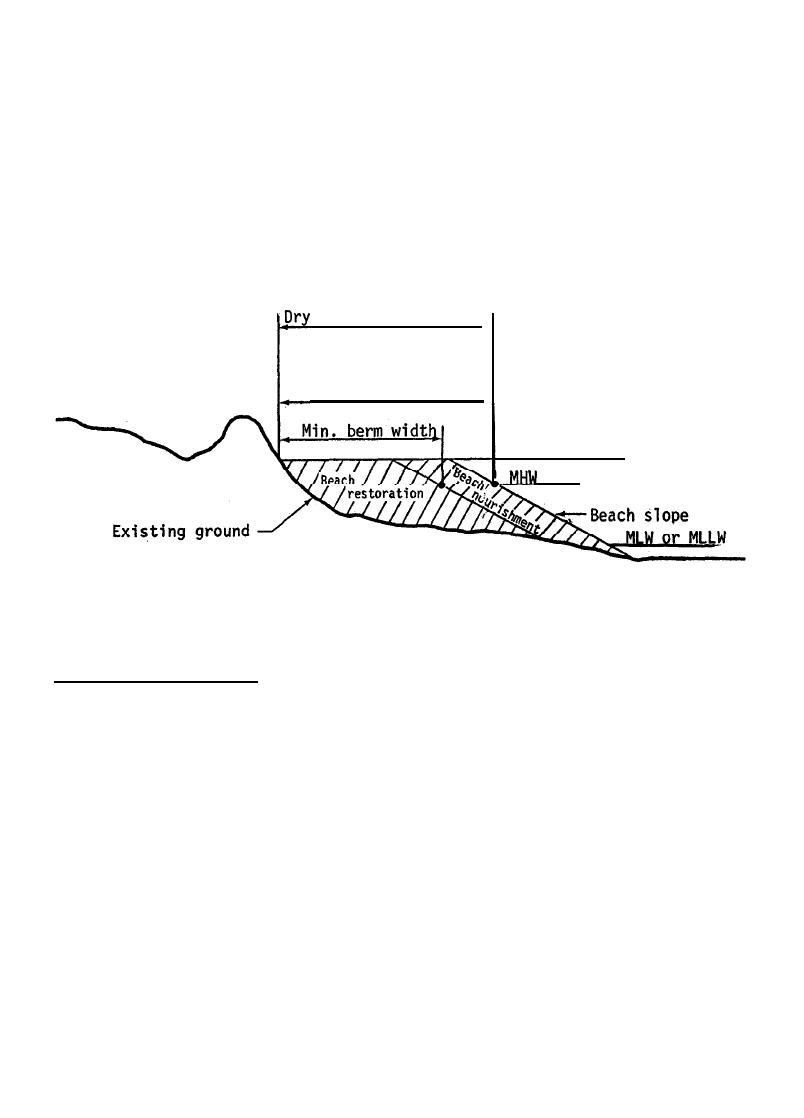
cause of most erosion problems, a deficiency of natural sand supply, and
they benefit rather than damage' the shore downdrift of them.
Protective beaches are adaptable to long reaches of shore and can be
provided at a cost relatively low compared to costs of other shore protec-
tion structures. Unlike more rigid structures, protective beaches can be
removed, if they prove to be detrimental, simply by discontinuing renourish-
ment operations.
beach width varies
Max. berm width
Berm elevation
or MHHW
Typical Design Section
Figure.
FUNCTIONAL LIMITATIONS: A protective beach functions by sacrificing itself
At some future time the
to erosion that otherwise would damage the uplands.
beach will have to be replaced to maintain its protective value. To make
an accurate comparison between a protective beach and other shore protection
structures, it is necessary to predict the number of times a beach will have
to be refilled during the functional life of a more durable structure. The
life span of beach fill is a product of the erosion rate. The rate is
determined primarily by the environmental conditions at the site and by the
Historical
characteristics of the borrow sand used to build the beach.
In some
shoreline changes can be used to estimate the future erosion rate.
locations a large portion of the fill may disappear during a single severe
storm; therefore, the accuracy of the lifespan predictions is dependent
Short, steep waves
upon the accuracy of storm condition predictions.
which usually occur during winter storms, tend to erode the beach. Long
2


 Previous Page
Previous Page
